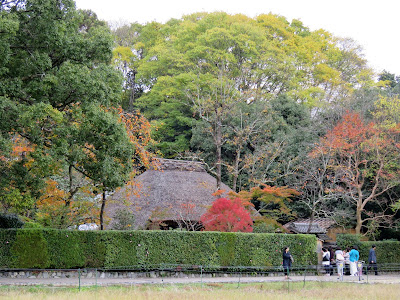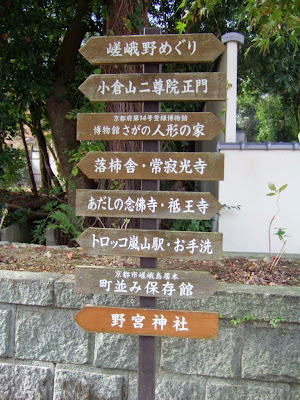
Bamboo are widely grown in Japan as it is versatile in usage. It can be used in buildings and fences, can be utilized in various forms in festivals, can be made into household like baskets, cups, boxes, mats and etc. Many bamboo products found in the local shops had been existing for centuries. Bamboo plants in their natural state especially when they sways and whistles with wind, are a magical sight.



The thick green bamboo stalks with penetration of skylight creates one of the top sights in nature.



The 500 meters long walking passage that cuts through a huge bamboo grove between the north exist gate of Tenryu-ji Temple and entrance of Nonomiya Shrine, is as if a special course-way leading one into another world.



The history of Bamboo Grove Passage dated back to about one thousand years ago. It was established in Heian Period (794-1185) by aristocrats who lived around the area. The walkway was designed for the passengers to relax and breath in fresh country air when walking on it.



Strolling through the dense bamboo grove to explore the hidden centuries heritage of Kyoto was the most interesting part of our Sagano tour.



The true charm of bamboo grove could not be captured or reflected in the photos.


The stalks of Bamboo are soaring to its endless height in all directions.



Jojakkoji is a little mountain side temple founded in year 1596. The entrance gate is beautiful and both sides of the elevated pathway that leads across the temple grounds are grown with maples and moss. It is particularly attractive in fall but we did not go into it as the main shrine hall is currently under renovation until mid 2016.



The beautiful little souvenir shop along the path way from the Bamboo Grove to the mountain temples.



The fruitful trees of persimmon.


Raksushisha Residence is a thatched hut belonged to a 17th century Haiku Poet Mr Mukai Kyorai. Literally, Raksushisha means a hut of fallen persimmon. Mr. Mukai gave the name to his house after he witnessed all the persimmon fruits dropped off from the trees in a storm.


There are quite a number of poems composed at Raksushisha by Poet Basho, who was the master of Mr Mukai and one of the greatest poets in Japan.


Raksushisha Residence is nested in a forested wood, surrounded by deep nature.


Distance view of Ogura Ranges


Following the road signs, walking at your own pace, strolling around the interesting scenic sights is the most enjoyable and leisure activity at Arishiyama.


The unknown little pond at the foot of the hills is home to many wild lives.






If your pair of legs cannot afford the walking any further and you do not want to miss the most scenic and historical district in Kyoto, step into the authentic Japanese Rickshaw and let the Japanese young man take you around at a cost of about 8000 yen. It should be a great experience in your lifetime.



This picture of Adashino Nenbutsuji was given by a Japanese photographer when we visited his photographs exhibition held in Honen-in. Adashino Nenbutsuji located at end of Saga Toriimoto Preserved Street in Arashiyama is famous for its 1200 stone statues of rakan, the devoted followers of Buddhism, that stand across the temple grounds at a forested mountain slope. They were only created lately within 1980s to 90s, and were made with different expression in each figurine. Were the works inspired from the Terracotta of Xian, China? I wonder.

Thanks for sharing useful information, Regards
ReplyDeleteRenewable Energy Company in Dubai